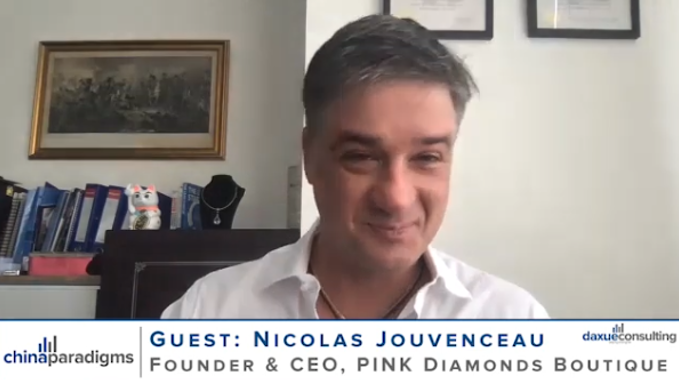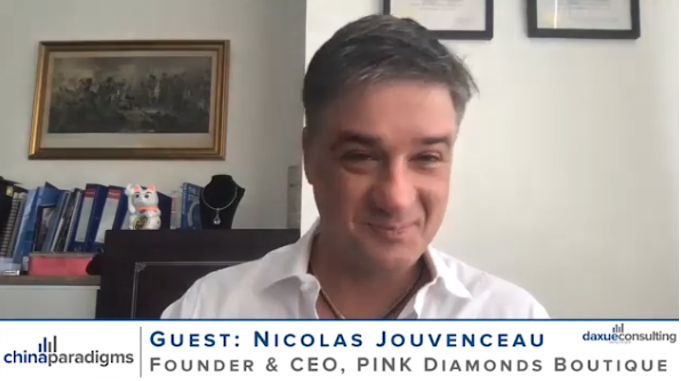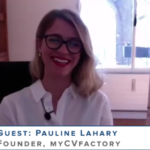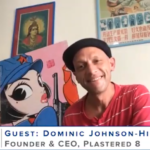Podcast transcript #45: A passionate jeweler shares his best practices for selling diamonds in China
Find here the full China paradigm episode 45. Learn more about Nicolas Jouvenceau’s story selling diamonds in China and find all the details and additional links below.
Full transcript below:
Matthieu David: Hello, everyone. I’m Matthieu David, the founder of Daxue Consulting, a strategic Market Research Company, and this China marketing podcast, China Paradigm. Today, I am with Nicolas Jouvenceau. You’re the CEO and founder of Pink Diamonds Boutique Company, selling diamonds in China. I learned from your website that there is only one colored diamond out of 100,000 diamonds mined, and that’s what you do. On your website, you are displaying a lot of different colored diamonds, jewelry, or not jewelry. You’re selling diamonds in China both as jewelry, something to use and wear, and as an investment as well. That is something I like to understand in the part of the investment and jewelry, and how to make it an investment as well. Jewelry is more approachable and understandable.
Thank you very much for being with us. You have been in China and developing Pink Diamond Boutique for more than 8 years now. Previously, you worked in the music industry, and you were an engineer. How did you come to create a diamond company in China?
Nicolas Jouvenceau: Thank you for the introduction. I came to China in 1999. At that time, it was a little bit for something different. I was actually not speaking English very well and forced to expatriate, so I came to China for that. I was still at the National Institute of Applied Sciences of Lyon, an engineering school, and I couldn’t pass my English grades, so I had to expatriate. They forced me to do an internship and study abroad. I just did that and actually really loved China. In between, I went back to Sweden for 8 months to finish my studies. After Sweden and China, it was a bit hard for me, so I decided to come back and work here just after I finished my studies.
I worked as an engineer at Shanghai Aldes Indoor Air Technology for a couple of years and actually lost my job because the company was not doing so well. I realized I was more commercial than technical, so I decided to move in there. I had this opportunity in the music industry as the sales manager at Warwick Music Equipment, doing electric guitars and bass. I became the general manager after a couple of months in this company and ran the company for eight to nine years.
I had a passion on the side, which started when I was a kid. I was collecting minerals and gemstones. Out of pure interest and passion, I started to study gemology at the Gemological Institute of America, but I had no idea of how to do business out of it. For me, it was really just a passion, so I built the lab in my home and was looking at gems in China every night. My wife thought I was completely crazy and very geeky, but I just did that.
Then I had the opportunity to meet a gentleman who was actually a diamond cutter, and I discovered colored diamonds. For me, that was a little bit the “aha” moment when I felt like this is really the top of the top, and this was something that nobody knew in China. 10 years ago, colored diamonds were not well known from the public. They were reserved for a few people who had access to them, so I decided to bring these gems to China. I started to buy and sell diamonds in China.
Everybody was coming to me for advice. I was still not really an entrepreneur in China. In my blood, I didn’t have that spirit of entrepreneurship in China. I was not trained for that. But everybody was coming to me and asking me for advice about how to find the perfect gems in China, which is good or bad, and the price. They had no idea, so I was giving advice all the time, still not considering a business out of it. I decided to buy some and I started to sell diamonds in China, and then I started the company. I started to trade them.
Today, we mostly deal with colored diamonds and also other rare gems in China as well. My thing has always been doing something that was not known from the public. This is also from my background as a collector of gems in China, which is to find unique stones and something different. When I started with colored diamonds, it was really to bring something that was really different, new to the Chinese diamond market.
I spent a lot of time educating people about gems in China. My first mission when I started to run the business was to teach people what gems in China are because, in 100,000 diamonds, there’s only one colored diamond, which is extremely rare. Even 80% of those colored diamonds are yellow, so we have been focused on the very rare colors like pink, green, blue, purple, orange, which most of the public don’t know. That’s a little bit of my story how we got there.
Matthieu David: When we talk about a “rare” product, we think it’s expensive. Could you tell us about how expensive a colored diamond is compared to more usual diamonds?
Nicolas Jouvenceau: Actually, it’s not. That is actually a misconception. I know most people would think that when we talk about rare, but some can be rare and cheaper than normal ones, and some can be way more expensive. There is a rationale for that. It’s because the Chinese diamond market is completely different for colored diamonds and white diamonds. I call them white, normal, colorless diamonds.
The normal, colorless diamonds are plentiful, and their price is more or less controlled by the cartel who mined the diamonds like De Beers or ALROSA. The big miners are consulting together to maintain the price as they are, so the prices are more or less manipulated for the colorless diamonds and are very transparent on the Chinese diamond market.
The colored diamonds are so rare that they respond to another logic. It’s all about supply and demand of the Chinese diamond market. If those diamonds are very rare, but there is a lot of demands like pink and blue, which today are very well known from the public, they are extremely expensive. But then you have some colors that are not well known from the public like orange, mixed orange, champagne, gray or silver, those ones are actually rare and not well known. There is no huge demand yet for those diamonds, so they are still cheaper than colorless, white diamonds.
There are a lot of other reasons as well, because, for example, you can have the perception from the public that the color needs to be sure to have a value or you need to have a pure blue or pink. But actually, color is very subjective. You can have orange-pink, which is a little bit brown or red. Those are variations from the initial color because the color is a full spectrum. You have a huge category, but those ones, which are a little bit different from people’s perception of pure pink or pure blue, will be cheaper and are not rare as well. They can be amazingly beautiful and can be very rare, but they will be cheaper because there is less demand in the Chinese diamond market.
This is what drives the investment side of those gems in China, the offer, and the demand. Some that are not well known will be sometimes presented as a not-too-expensive opportunity of buy-in with very nice upside potential in the future. The investment side is a bit complex. There are different opportunities for different kinds of gems in China, but the base logic is the offer and demand, the rarity against the demand from the public.
Matthieu David: As a diamond dealer in China, you are also exporting. Where are you selling to?
Nicolas Jouvenceau: We have several activities. One, we are trading. We are sell diamonds in China and worldwide among traders. In China, we focus on retail in China and end-consumers. We do two things for them here, diamonds investment, selling diamonds in China to one investor, or private custom jewelry in China. One big part of what we do is also designing and building custom jewelry in China for clients.
Matthieu David: How about the price of getting custom jewelry in China with your gems in China in terms of ranges?
Nicolas Jouvenceau: Even though we do it with rare gems in China, we can do custom jewelry in China for less than $1,000 to virtually no limit. The price for custom jewelry in China is actually not that high because we are in Asia, where manufacturing is actually pretty good but not that expensive, so we have a very wide range of price and budget. This is why we actually can cater to very different kind of clients.
We have different kinds of clients. Even for traditional wedding market, which is normally for colorless, because this market has been there for 80 years with colorless diamonds. The purity of the marriage and diamond is forever and about love. The colored diamonds represent an opportunity to be different and sometimes more affordable when you are a young man who needs to get married and doesn’t have a huge income in early life. But you can get something bigger compared to colorless diamonds with a lower budget. That is also an opportunity that we actually cater to people who want something different.
Matthieu David: In retail, do you make custom jewelry in China, or do you have your own retailor of gems in China?
Nicolas Jouvenceau: We have our own gems in China. We do have jewelry that is ready-made as well, but not that much. Most of what we do is custom jewelry in China. We are not a shop just selling diamonds in China, so it’s not like we are on the street and available for everybody. We maintain this rarity by working only with an appointment. It doesn’t matter what you do, a big project or a small one. We only make an appointment.
People come to see us. They choose the gems in China and look at the product. I teach them how to look at these gems in China, on which we attach a lot of importance. I also use my background as a diamond dealer in China to teach them and then transfer this knowledge to them about how to look for the beauty of diamonds inside. Usually, clients come to sit with me. I show them how to use tweezers properly and how to look the inside of stones and understand what are under the stones, which makes them beautiful, and what makes them valuable compared to others.
Matthieu David: How do they come to meet with you, through education and training you did, online or offline? Is it through the retails that you presented them after they first see some display and need to book? How do your clients find you and interact with you?
Nicolas Jouvenceau: Most of it is for private clients. Today it’s the word of mouth because we already have a good presence in Shanghai. When we started, I was networking in China a lot and meeting people. We didn’t really know how to sell diamonds in China.
Then we surfed on the wave when WeChat appeared. We started to meet as many people as possible. We are very good at networking in China, meeting people, and enlarging our network. We posted on WeChat and promoted our products to private contacts. During the early days in WeChat, the acceleration of the number of contacts you got and the visibility it had gone really fast. Weibo was extremely useful, as well. There are a lot of people through Weibo, which went down a lot for the last five years, but WeChat has been accelerating on that. That’s one way to network in China.
The other way is that we are doing a lot of conferences to educate people. I would take 10, 20, 30 people in a room and bring some gems in China, and I’ll teach them. I basically give a conference on how to look at those gems in China, where they come from, how you keep them, what makes them different and valuable, why they have colors, and all basically layout knowledge.
In the early days, nobody actually understood and knew what gems in China were. Even today, few people understand what an orange or purple diamond is. Those colors are still not very well known from the public, so I still do this. There’s more awareness today, but in the early days, we were doing a lot of conferences and private meetings. People came to see us and got to know us. Today, our main channel would be a referral, so we have a lot of people who refer us.
Matthieu David: Talking about China more specifically, how would you define the Chinese diamond market compared to the Western ones?
Nicolas Jouvenceau: The Western diamond market is rather different. The Chinese diamond market actually overtook the West in this regard. In the West, we started to offer diamonds for weddings and engagements, but in the diamond culture in China, it’s very recent. 15 years ago, Chinese didn’t have the diamond culture in China to offer gems for engagement. However, the Chinese actually love gems in China. They love gemstones and jade. They have this diamond culture in China of having something very important like an untouched, unheated, unmodified, and absolutely natural gem, while in Europe, we have less of this concern. Their concern is more about the budget, but they are less concerned about the treatments that will go through the stones. For example, with sapphires and rubies, because the consumer market in China is definitely way bigger than the one in Europe. The purchasing power is also becoming way bigger in China, so the scale of the Chinese diamond market is completely different compared to Europe.
In terms of wearing jewelry, it’s often considered much safer in Asia. Asian people are wearing more gems in China, and they feel safer. In Europe, there is this concern that people don’t want to show wealth. They are scared to show and wear too much in the vast majority of the population. In China, they are less complex to wear jewelry, show what they own, and make themselves happy with it.
Matthieu David: You said that 15 years ago, Chinese diamond market was not that big or not that attractive. Do you feel that now the Chinese diamond market is impacting the prices worldwide, or is it still not that big to have a worldwide impact?
Nicolas Jouvenceau: No, it does have a worldwide impact. Today, the Chinese diamond market is probably the second biggest in the world after the U.S. It’s a huge market to sell diamonds in China.
Chinese diamond market actually evolved. 15 years ago, they only knew white and colorless diamonds. Even gemstones like ruby or sapphires were unknown to the market. One of the initial stones I wanted to bring to the Chinese diamond market were rubies and sapphires because people did not know them. Colored diamonds were really unknown because nobody was actually putting them on the Chinese diamond market. The shops, the companies, and the diamond dealers in China were not actually selling diamonds in China, because there was no demand. So, who comes first, the diamond dealers in China or the demand? The demand was not there, so nobody was actually putting them on the Chinese diamond market.
There was only one diamond dealer in China who was actually starting to promote gems in China, which was Tiffany. Tiffany started to promote yellow diamonds all over the world, and that’s how it started. People actually started to get to know them and understand that there are colors other than white diamonds, and they could be really beautiful and valuable as well.
Pink diamonds started with celebrities like Jennifer Lopez. That’s how they get to be known on the Chinese diamond market, plus diamond dealers in China are starting to bring them on the Chinese diamond market. But it started 15 years ago, more or less. In China, it was still fairly unknown, and through old and small diamond dealers in China, bringing them and educating the public, the Chinese diamond market started to be more significant.
Today, the Chinese diamond market is actually quite developed compared to the West. Chinese are way more aware today that there are pink diamonds, yellow diamonds, or green diamonds. I would say in Europe; they don’t know that well because the demand is not there. There’s not as much demand as in China for those rare gems. Fewer people are willing to wear them or looking for them. Maybe there is more demand more in terms of investment because people start to understand that colored diamonds are an interesting investment, but white diamonds are not. There was this misconception in the past that colorless diamonds would be a nice vehicle to preserve your wealth or invest, but actually, they’re not. This misconception starts to erase. People start to realize that colorless diamonds are not necessarily a good investment and they’re looking at more interesting things.
Matthieu David: You talked about Tiffany, Jennifer Lopez, the pink diamond. How do you differentiate as a smaller player when you have those big diamond dealers in China? I went on your website; we see very colorful and artistic pieces of jewelry. I feel like, as what I understood from your website, that one was a differentiation. You are much more artistic. We see much more imagination working to it and uniqueness than some diamond dealers in China. How do you differentiate yourself from those big diamond dealers in China?
Nicolas Jouvenceau: One of our early differentiation was that we would bring the rare gems in China. We focused on the rare gems in China. Even Tiffany was starting with the yellow diamonds because it’s very hard for them to equip every one of their shops with pink diamonds as a series because they are rare and every one of them is different. When you make a distribution worldwide or have 500 shops, you can’t equip all the shops with a standard product. For them, it’s more difficult.
For us, we were very boutique and focused on these very specific gems in China, so it was easier for us to find unique gems in China and provide something special. This is why my focus is not even on yellow diamonds, but more on the rarer gems in China. We are always looking for fine and special stones with a big focus on finding premium quality for diamonds. Even though they can have the same grade and colors, there’s also a different quality of make and cuts. The raw material was already our huge focus.
Our second focus will be custom jewelry in China, designing and providing something different from the mainstream diamond dealers in China. That’s also how we try to differentiate. You saw a bit of design online. We didn’t try to do it like a brand. We would try to make everything a series.
Initially, I was not a designer. I became a designer because I had to design my products. But I was never trained as a designer. I was just an engineer, so I can actually design in 3D. That’s why today I designed in 3D. I also learned to draw, and I’m drawing my gems in China. But our focus is to do something special or unique. We have personal custom jewelry in China because this is something I love. I have a lot of fun to do something, which is different from the normal piece of jewelry.
The last differentiation that the big diamond dealers in China can’t do is providing a completely different experience. When people come to see me, they learn about the stone and don’t just buy it in the shop with a certificate for it. They learn and understand what these gems in China are. They understand how special it is, what makes it unique. Then I will not just design for them. I’ll design with them. When I have a gentleman, who comes to buy a stone for his wife or girlfriend, I will involve completely so that he feels in charge of the design and he’s the one making the design. I’m just assisting and typing in to put the pieces together. Sometimes they don’t know, so I will guide them and show them the picture. We have a whole process for that to make them feel the experience of “I’m building my gems in China,” which I think gives a lot of satisfaction to any client who wants to make a piece of gem in China.
Matthieu David: It’s great to interact with them and say you can make custom jewelry in China. So, they would come back to you anyway to understand how much they can customize. I am on your website, and the type of design you have reminds me of the jewelry you can find in the crown and museums from kings and princesses because they’re very colorful and you put different colors on these gems in China. That’s the effect you can have when you see the jewelry.
You are talking about the design and production of it. How do you produce gems in China? You said that you met with a diamond cutter and work with him. You’re designing yourself in 3D through software. Could you explain more about the process?
Nicolas Jouvenceau: The gems in China we get are from manufacturers, traders, or private people. The diamonds are already cut. They’re not rough. We don’t cut gems in China ourselves. I’m a gemologist and a diamond dealer in China, so I’m a specialist for stones that are already cut. We will buy them from the manufacturer and have loose stones. When we design the piece, we design either in 3D or by hand. Once we have the concept, we make production drawings, which is the piece that’s going to be produced. From that, we make casting and wax, and then in 3D, we make wax or sculpt it by hand. The wax is used to make a mold. We will melt the wax and use this mold to make the gold, and then everything else is finished by hand, from the setting of all the small stones to the polishing of the metal, all the small details that you will see on the jewelry.
That’s basically the whole process of the manufacturing. We do some jewelry in China and some for the very high-end in Taiwan. So, we have these both manufacturing places to do it.
Matthieu David: Why would you do it sometimes in China and sometimes in Taiwan? Why would it be more high-end in Taiwan?
Nicolas Jouvenceau: Because in terms of quality, the work that we have in Taiwan is much more delicate. In terms of quality, it will be much better finished than in China. That’s why we do it there.
Matthieu David: The other aspect of your product is to be an investment. Could you tell us more about how Chinese see diamonds as an investment and the Chinese diamond market related the to investment?

Nicolas Jouvenceau: Chinese always have this concern of buying diamonds or jewelry for them that it needs to keep value, which means they expect it to grow. Chinese had a lot of faith in gold, for example. When the baby is born, every Chinese offers 24-karat gold to the kid. This wealth preservation is really important in China. When they buy jewelry, they want it to be a legacy to keep in the family and preserve wealth, so they are very concerned about that. This is why they won’t buy stones, which have been heated and modified in any way.
Diamonds don’t exist because we don’t treat diamonds. But for example, sapphires and rubies, 90% of them are heated to improve colors and sold massively in Europe. The emeralds were oiled, which caused a huge scandal in the U.S. because jewelers are not disclosing that. But emerald has a very standard treatment, but you just have to say it. For Chinese, it’s extremely difficult to make them understand the treatment. It needs to be a natural product and preserved in its beauty and its value, and they have a very big requirement for that.
The investment in Chinese is a lot about wealth preservation and growth. They see gems in China as a very tangible asset that you can own and will grow in the future for their family and themselves.
Matthieu David: It’s pretty new to think of diamonds as an investment on its own, right?
Nicolas Jouvenceau: For diamonds and for Chinese, yes, because a lot of people didn’t know them. If you looked back a hundred years ago, colored diamonds were disregarded as substandard, compared to the normal, white diamond, until people realized they were actually exceptional. The connoisseur and diamond dealers in China knew that those stones were special. But the general public did not have this awareness. This is why you can see gems in China on auction that we sell for millions of dollars and we have bought back in the 1920s or ‘30s for $5,000 or $10,000. This is exactly why you can see that because the awareness was not there.
Matthieu David: You’re a member of EO, Entrepreneurship Organization in China. Would you mind sharing what EO brought to you? EO has built a very strong network in China. I was part of the accelerator before, but I’m not an EO member now. Could you share what you got from EO?
Nicolas Jouvenceau: I got a lot. The reason why I got into EO and the reason why I’m staying is very different. I got into EO because I was driving my business by networking in China and meeting new people. I had a lot of clients who were entrepreneurs in China, so I naturally joined the organization to network in China. But I did not stay for that reason. EO brought me so much more than this. It didn’t bring me in terms of sales or networking in China. Very quickly, I realized it would bring me something else. EO is all about helping entrepreneurs in China. It is a very solid network to learn.
They have amazing speakers and learning events, from which it’s extremely important to learn. When you are an entrepreneur in China, you are fairly lonely. Nobody is teaching you if you’re driving your business in the right or in wrong way. Certainly, when you’re an entrepreneur in China, you have some talents in some direction, but you have not some talents in some other direction. For example, I am a very technical guy. I have talents for design, and maybe I have talents for passion for what I do. I am probably a good salesperson, but I’m a terrible marketer and at managing finance. This is something that you learn what you don’t know, and you benefit from the experience of the other.
The most powerful thing for me in EO is the forums and small gatherings that we have every month between a couple of members, and we share deeply what we do. From that, we learn a lot by sharing with each other. EO has been a huge help for me, and I recommend it to any entrepreneur in China.
The accelerator is a lot better because you’re learning more. You have even a coach and a mentor. They have a mentorship program as well, which is great because everybody needs a mentor. Everybody needs to be coached in some direction. You can’t be perfect. I had the opportunity to mentor some younger entrepreneurs in China on some expertise that I have, and I thought this is extremely useful because it also brings you something else. You can see the eye of the entrepreneur in China that you are coaching what he’s going through and how you can help. It’s extremely satisfying and eye-opening because you will see things so differently. The mentoring will bring you something and teach you something, which is something hard to understand when you haven’t done it. But when you do it, it’s really rewarding.
Matthieu David: EO is about scaling up the business. How do you scale networking in China? Do you feel there is a way to make it systematic and more scalable, and so on?
Nicolas Jouvenceau: I have a very strong belief in useful networking in China, actually doing it in the right way. In the past, networking in China was doing okay. We meet people, and it was all superficial. Today, we have a very different approach to it. We are networking in China by being useful to people. Basically, we will try to bring free value to people in our network in China. Today’s world is too much about, “I’ll give you these if you give me that, and I will do this.” I have a very different approach to it. I help whoever are in my network in China. It is interesting to me. I willfully and do it on purpose to find things that would benefit that person. We’ll look for values that this person in my network will feel valuable. I believe this value is coming back.
We’ve been doing this, and I’ve been training even my team to find people and networking in China in the right way by bringing value to people around you. Ultimately, these come back. People who you brought value to think about you and regard you as a very valuable person. We can see it does come back. You can call it the business karma, but it does work.
There is a very interesting book. I started to do this after reading that book “The Snowball System” by Mo Bunnell. I found this extremely powerful and useful for anybody who is in business development.
Matthieu David: Diamond is very precise and specific in a niche. It’s a niche by definition because it’s rare. It’s typically something we should work with online marketing because you will rank very easily where you want to rank. You will get very specific visibility and so on. Why didn’t you mention marketing as a source of acquiring clients and more in networking in China?
Nicolas Jouvenceau: I’m a little bit struggling with that one because I was never really good marketer to start with. When we started the company, I never tried to position ourselves as a brand. Today, we are more trying to do this because I learned. We were actually appraised as very attractive because we were dealing with factories with top-notch quality. We were surfing on that.
Today, I am looking at developing this differently with marketing. Chinese diamond market is complex for. There are many companies in this business. It’s an extremely competitive business today than 10 years ago. We have to change that and use more marketing to do it. We are still working on this, basically, how to grow and scale up with this.
Matthieu David: Do you have other next steps in the development of your business?
Nicolas Jouvenceau: I’m always looking at other businesses. What you might not have seen on my website because my website focuses on the colored diamonds, but we also develop new stones on the market. We did it again, starting in the middle of last year. We start to bring Spinel to Chinese diamond market. Spinel is a very rare gemstone that people don’t know. We are repeating what we did with the colored diamonds, bringing to the Chinese diamond market something rare, unknown, and with strong potential for growth. Spinel is a stone that comes from Southeast Asia like Myanmar, Vietnam, Tajikistan, also Tanzania.
But for many years, that stone has been confused with rubies and sapphires. Very often it has been sold as ruby or sapphire. Some famous rubies or sapphires are actually not rubies or sapphires, but spinel. So, we are trying to bring back the awareness about that stone, which is actually rarer than those famous gems in China. They should be more expensive, but today they are still cheaper because they are not well-known. This would create a new brand for them. We call it the Spinel Collection, and we are actually promoting those gemstones again.
We also recently started to distribute watches in China. I fell in love with a very young brand in Switzerland, and I actually love watches. The first time I started to know it is when I saw it on one of my friends. I just bought one straight away. I came to meet the owner of that company and really fell in love with the product because they’re really beautiful. I asked him to bring the distribution for China, and he said yes. We just start to distribute them to bring them to the marketplace. For us, it’s new as well. It’s a completely different business with Chinese diamond market, but they are still brothers and sisters. This is one thing new that we are starting to do as well.
Matthieu David: Interesting. Thank you very much. Congratulations on everything you achieved. It was very interesting, very inspiring to talk to you. I hope you enjoyed it.
Nicolas Jouvenceau: Yes, it was fun. Thank you, Matthieu.
Matthieu David: Thanks, everyone, for listening. Have a good day. Bye.
Nicolas Jouvenceau: Thank you very much. Bye-bye.
China paradigm is a China business podcast sponsored by Daxue Consulting where we interview successful entrepreneurs about their businesses in China. You can access all available episodes from the China paradigm Youtube page.
Do not hesitate to reach out our project managers at dx@daxue-consulting.com to get all answers to your questions



![[Podcast] China Paradigm 45: Analyzing the market for colored gemstones in China](../wp-content/uploads/2019/06/gemstones-China-podcast-150x150.jpg)


![[Podcast] China paradigm #18: How to take western digital marketing success into China](../wp-content/uploads/2019/04/China-business-podcast-China-paradigm-18-150x150.jpg)








